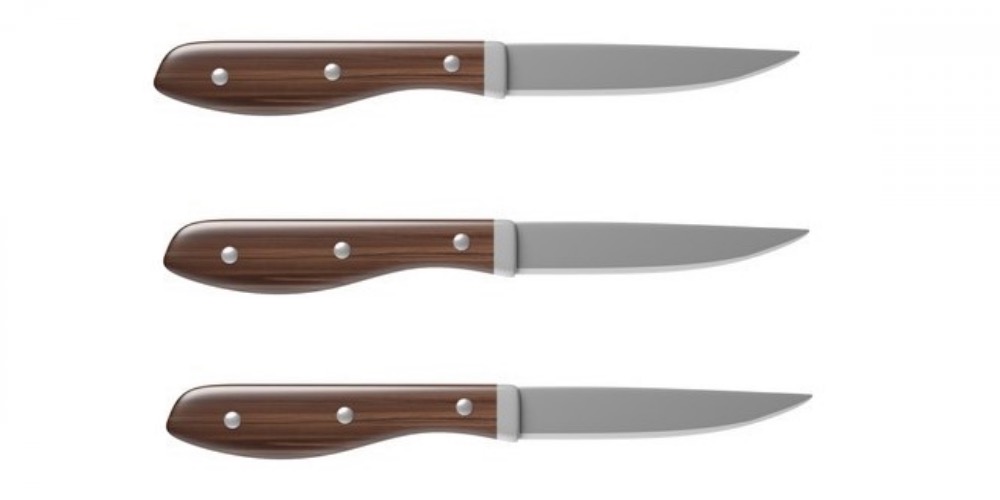If you’re searching for a knife to perform tasks such as peeling vegetables or fruits, you should opt for paring knives. These knives are similar to a chef’s knife but have some distinct properties that make them ideal for delicate kitchen tasks.
The source of inspiration for paring knives came from a French bookmakers tool that consisted of a large piece of steel with a wooden handle. Over time, it evolved into modern-day paring knives that feature a short blade usually made of stainless steel.
What Is A Paring Knife?
A paring knife is a smaller variant of a chef’s knife. The primary distinction between these two is the length and curvature of their blades. A paring knife has a curved blade that is 2 to 4 inches long and has a spear point.
These knives are used to cut small ingredients or perform delicate culinary tasks such as slicing, peeling, etc.
Why Should You Buy A Paring Knife?
A paring knife serves many purposes. Its prime function is to peel skins of fruits and vegetables, but it can also carry out many other kitchen tasks. Instead of working with a peeler, you should opt for a paring knife to get hold of its maximum benefits.
Additionally, these knives are known for their portability. You can easily carry them around with you to picnics or BBQ parties. Along with being a vital element of every cook’s inventory, this knife is also an excellent multitasking utensil.
Types Of Paring Knives
There are several types of paring knives. There’s the bird’s beak paring knife, which slices vegetables in the form of a football to ensure equal cooking. Another kind is the straight-bladed sheep’s foot paring knife. This results in straight and accurate cuts with little hand motion.
Serrated paring knives are another type. However, these knives are somewhat bigger than a standard paring knife and are an excellent choice when a sawing motion is required. They feature serrated dentures that aid in the cutting of fruits with waxy skins.
Uses of Paring Knives
Paring knives can be used for a variety of precise tasks. Aside from peeling vegetables, they may also be used to score meat, devein shrimp, slice garlic, and hull strawberries. Hence, many cooks prefer to use these knives for jobs when a chef’s knife is too big.
The following are some detailed actions that you can perform using paring knives.
- Peel Vegetables: Paring knives are an excellent substitute for peelers. Hold the vegetable firmly in one hand while gripping the knife’s handle with the other. Gently slide the blade in the appropriate direction to peel off the ingredient’s skin.
- Hull Strawberries: To hull strawberries, push the tip of the knife into the side of the stem and cut a circle around it. Remove it and enjoy your delight.
- Decase Sausages: Sausages are often wrapped in a thin sheet, which can be inconvenient while cooking or slicing the sausage into smaller pieces. To remove the sheet, make a faint line on one side of the sausage with the paring knife. Then, peel the casing all the way back and throw it away.
- Score Meat: In order to score meat, draw several lines on the fatty portions of the flesh. When cooked, the taste will permeate through the slices.
- Devein Shrimps: Paring knives can make deveining shrimps more bearable. Locate the dark vein on the back of the shrimp, make a small cut with your knife, and take out the intensive using the blade’s tip. Don’t forget to wash the shrimp with cold water!

